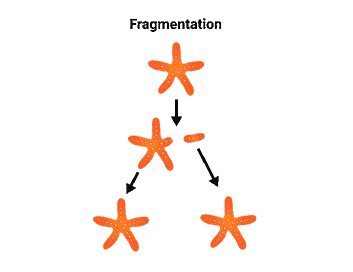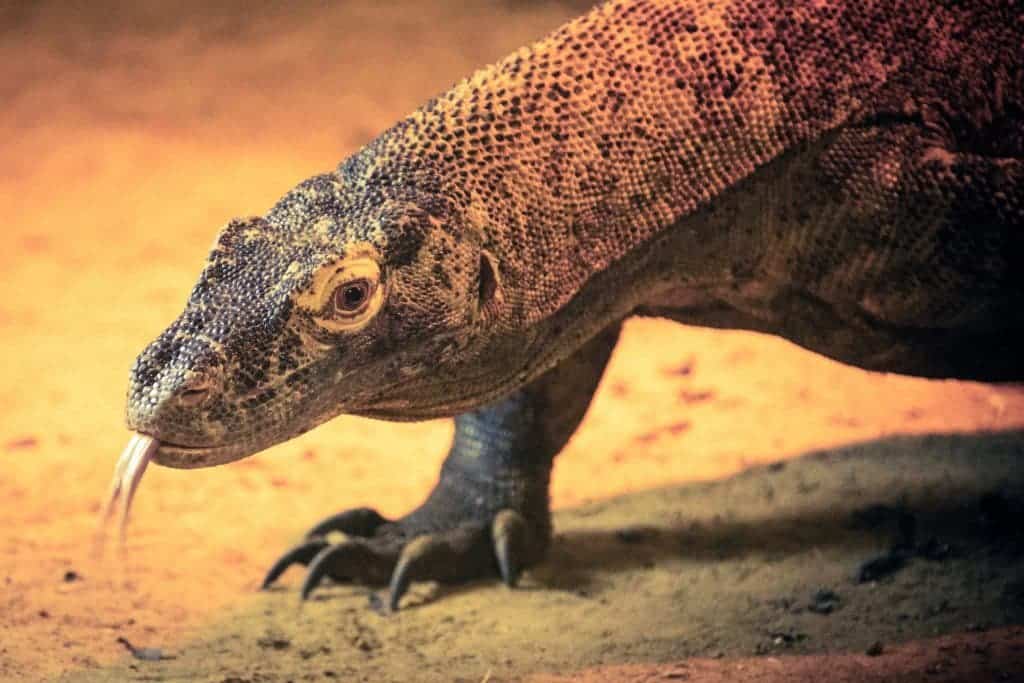
Not every living thing has two parents. Some animals and plants, oddly enough for us humans, are made from just one parent. That’s because these organisms reproduce asexually, unlike sexual reproduction which requires two parents.
Asexual reproduction does not involve gametes (sex cells like sperm and eggs) or fertilisation. As a result, there is no mixing of genetic information and every offspring is genetically identical to the parent. They are all basically clones.
Rather than sex cells, asexual reproduction involves somatic cells that divide mitotically, giving rise to new sets of cells with the same genetic composition.
All bacteria, and all prokaryotic organisms in general, reproduce asexually. This is easily verifiable since bacteria have just one chromosome, rather than X and Y chromosomes that humans and other organisms that reproduce sexually have.
Main differences between sexual and asexual reproduction
| Sexual Reproduction | Asexual Reproduction |
|---|---|
| Two parents are involved | A single parent is involved |
| An egg is fertilized by sperm | The new organism is formed from the parent and both of them are identical to each other (clones) |
| Found in humans, many plants, and many animals | Found in bacteria, reptiles, certain animals, and many plants |
| The offspring are different from their parents in many main aspects | The offspring are identical to their parents and ancestors |
Process is time-consuming but will lead to greater genetic variations in the next generation | Process is relatively faster but there is no/limited genetic variation in the next generation |
Advantages and disadvantages of asexual reproduction
Obviously not being forced to gain access to a potential mate or compete with others in order to reproduce is one of the most important advantages of asexual reproduction.
Asexual organisms are the ultimate single parents, reproducing on their own and on their own terms. They literally don’t need no man (or woman) in their lives. A single asexual individual can replenish an entire population whereas if there is only a single individual left that sexually reproduces, the entire species is doomed.
As a result, an asexual organism can reproduce phenomenally fast and in massive numbers. Bacteria, for instance, may divide several times per hour. In just a few hours, 100 bacteria can spawn millions of other individuals — but that’s under ideal conditions. In the real world, the vast majority of individuals do not live long enough to reproduce because they are limited by resources, predators, and other factors.
Secondly, plants that bypass the sexual process can reproduce during severe droughts since motile sperm require water to fertilize the egg.
From an economic standpoint, agricultural plants with certain desirable characteristics can be produced faster and cheaper through cloning compared to plants that require sexual reproduction. The problem with this particular approach is that if a single fatal mutation occurs, the entire society of clones can collapse. Likewise, monoculture plants are vulnerable to disease outbreaks.
The banana, which is the world’s most popular crop with over 100 million metric tons produced annually, is illustrative in this sense. Virtually all bananas sold in developed countries are of the Cavendish variety, all of which are clones and vulnerable to fungal outbreaks that may one day wipe out the entire family. This has happened before in the 1960s with a different subgroup of bananas, which is now all but extinct.
Organisms that employ asexual reproduction are often only suited to one habitat, which is another drawback. But the most important downside of asexual reproduction is probably that it does not lead to genetic variation in a population. That’s not to say that asexual species can’t evolve. Asexual reproduction will occasionally introduce genetic variation into the population if a random mutation in the organism’s DNA is passed on to the offspring. But compared to sexual reproduction, the variation remains near to zero.
Neither sexual nor asexual reproduction is better than the other. Both modes of reproduction are adaptations to temporally or spatially variable environments. For instance, perennial plants that grow in environments with rich soil nutrients or water content tend to promote clonal growth over sexual reproduction. In contrast, under high light-quantity conditions, plants tend to allocate more biomass to sexual reproduction and less to clonal propagation.
Types of asexual reproduction
There are six main types of asexual reproduction, which lead to distinct reproductive strategies. These are:
- binary fission,
- fragmentation,
- budding,
- vegetative reproduction,
- spore formation and,
- agamogenesis.
Binary fission
In binary fission, or just fission, a parent organism splits into two or more identical individuals. This is the most common mode of reproduction among single-celled organisms such as bacteria, archaea, and some fungi.
This process is extremely stable because prokaryotes tend to have a very simple genome, so there are relatively few mutations as compared to eukaryotes. Eukaryotes must undergo many cell divisions before the gametes can be produced for sexual reproduction, and in the process many more mutations can be introduced before offspring are even created.
Fragmentation

Fragmentation is a form of asexual reproduction that mostly occurs in multicellular organisms (i.e. organisms made up of more than a single cell). During fragmentation, a living organism splits into parts that later grow identical to the original parent with respect to shape, size, and other characteristics.
Fungi, lichens, molds, worms, sea stars, and sponges are some of the common examples for which fragmentation asexual reproduction occurs. It is also common in plants. Planting parts of the tuber of a potato can result in a new potato plant with the same genetic makeup. When broken apart, weeds can regrow from each fragmented underground stem, which is partly why they’re so pesky.
Fragmentation is different from regeneration. The process of fragmentation leads to the growth of two separate identical organisms whereas regeneration allows certain organisms to regrow certain body parts that are lost. Lizards and octopi are some examples of creatures that can regrow lost limbs or tentacles, respectively. However, a new lizard won’t grow out of its lost tail.
Budding
Budding involves the formation of an outgrowth, or bud, from the body of an organism. This bud tends to be much smaller than the parent body and can later develop into a new individual, which is a clone of the parent.

Budding is common among fungi, such as yeast, as well as plants, such as the spider plant. Some invertebrates also employ budding to reproduce, including hydra, corals, echinoderm larvae, and some acoel flatworms.
Vegetative reproduction
When budding in plants is induced artificially, such as during the horticulture practice of grafting wherein the bud of one plant is inserted onto another plant so that both plants grow together, the process is considered a form of vegetative reproduction. Roses are just one example of a plant that is commonly bud grafted.
Vegetative reproduction is an umbrella term that refers to any type of asexual reproduction observed in plants, not just budding. Anytime a plant reproduces without the help of seeds or spores, that is an instance of vegetative reproduction. Instead, plants reproduce using this type of reproduction through bulbs, tubers, shoots, suckers, stolons, and rhizomes.
Spore formation
Spores are haploid reproductive cells, typically found in plants, algae, and some protists, that can fully develop without fusing with another cell, unlike gametes. Plants such as ferns, moss, and fungi reproduce by this method.
Spores are stored in a sac called sporangia. When this knob-like structure bursts, countless minute single-celled spores disperse into the air, where they are scattered by rain, wind, or insects.
Agamogenesis

Agamogenesis refers to reproduction that does not involve a male gamete (sperm). There are two subtypes: parthenogenesis and apomixis.
Parthenogenesis refers to reproduction where the growth and development of embryos occur without fertilization. Examples of organisms falling into this category of asexual reproduction include aphids, rotifers, nematodes, as well as many plants and, believe it or not, the fearsome Komodo dragon.
Apomixis is asexual reproduction without fertilization strictly in plants. During this phenomenon, plants bypass the most fundamental aspects of sexual reproduction — namely meiosis and fertilization — to form viable seeds. Biotech is very interested in developing an apomictic method of growing crops since it would reduce cost and breeding times, as well as avoid many complications typical of sexual reproduction in plants (i.e. incompatibility barriers). Some scientists have gone as far as calling the production of seeds without a sexual union the ‘holy grail of plant biology.’


